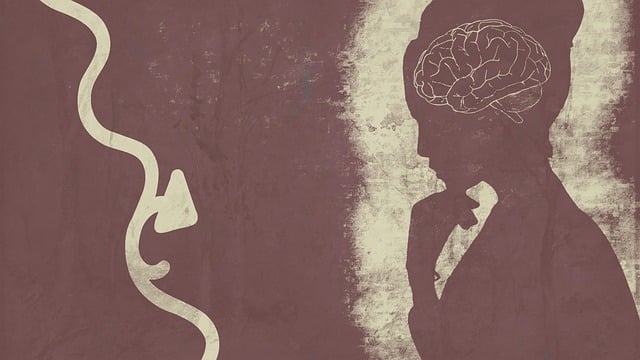Colorado Springs Sexual Addiction Therapy offers a comprehensive, holistic approach to treating sexual addiction, prioritizing personalized risk assessment and harm minimization. Through in-depth analysis of clients' behaviors, thoughts, and emotions, therapists develop tailored strategies addressing individual challenges and long-term recovery goals. This method integrates cognitive-behavioral therapy with peer support networks, focusing on both self-care routines and community initiatives. By identifying underlying issues like trauma or stress, the therapy empowers individuals to manage cravings, reduce impulsive behaviors, and adopt healthier emotional coping mechanisms for a balanced, fulfilling life. Their dynamic approach includes continuous improvement, community outreach, and policy advocacy, ensuring relevant, impactful services for sexual addiction recovery.
Risk assessment and harm minimization planning are vital components of successful treatment for sexual addiction. This comprehensive guide explores these essential aspects through various lenses, starting with a deep dive into understanding risk assessment as a cornerstone of effective therapy. We then present the Colorado Springs Approach, showcasing integrated harm minimization strategies. Key topics include identifying and evaluating risky behaviors, creating personalized recovery plans, and continuous monitoring for long-term success, all tailored to the unique challenges of Colorado Springs Sexual Addiction Therapy.
- Understanding Risk Assessment: A Cornerstone of Effective Therapy
- The Colorado Springs Approach: Integrating Harm Minimization Strategies
- Identifying and Evaluating Risky Behaviors in Sexual Addiction
- Creating a Personalized Plan: Strategies for Safe and Sustainable Recovery
- Continuous Monitoring and Adjustment: Ensuring Long-Term Success
Understanding Risk Assessment: A Cornerstone of Effective Therapy

In the realm of Colorado Springs Sexual Addiction Therapy, risk assessment is a fundamental process that forms the cornerstone of effective treatment. It involves meticulously evaluating an individual’s behavior, thoughts, and emotions related to sexual addiction, along with potential triggers and vulnerabilities. This comprehensive analysis allows therapists to identify specific risks and develop tailored strategies for harm minimization. By understanding the unique challenges each client faces, therapists can offer personalized guidance and support, fostering a path towards recovery and positive thinking.
A crucial aspect of this process is not only identifying risks but also equipping individuals with valuable communication strategies. Through open dialogue, clients learn to recognize their triggers, manage stress, and develop healthier coping mechanisms. By integrating these techniques into daily life, Colorado Springs Sexual Addiction Therapy aims to reduce risks and promote a more balanced and fulfilling life. Effective harm minimization planning considers the whole person, addressing psychological, emotional, and social aspects for lasting change.
The Colorado Springs Approach: Integrating Harm Minimization Strategies

The Colorado Springs Approach to harm minimization and risk assessment offers a comprehensive strategy, particularly tailored to address sexual addiction. This innovative model integrates therapy with a focus on both individual healing and community support, akin to how robust stress management programs in healthcare settings combat burnout prevention strategies for providers. By combining cognitive-behavioral therapy with peer-to-peer support networks, this approach recognizes the multifaceted nature of addiction.
This method encourages individuals to develop self-care routines for better mental health, fostering resilience against triggers and cravings. The Colorado Springs model also promotes community engagement, where recovery groups and educational initiatives contribute to a supportive environment. This holistic view mirrors effective burnout prevention strategies for healthcare providers, emphasizing not just individual treatment but also the importance of collective well-being.
Identifying and Evaluating Risky Behaviors in Sexual Addiction

Identifying and evaluating risky behaviors is a critical step in addressing sexual addiction. This process involves a comprehensive assessment of an individual’s patterns, triggers, and coping mechanisms related to their sexual behavior. At Colorado Springs Sexual Addiction Therapy, we recognize that addiction often stems from underlying issues such as trauma, stress, or depression, which can lead to harmful coping strategies. By understanding these risk factors, therapists can tailor treatment plans to address the core causes.
Risk assessment may include analyzing frequency and intensity of addictive behaviors, the impact on personal relationships, and potential consequences for physical and mental health. This evaluation is essential for developing effective harm minimization strategies. Incorporating stress reduction methods, depression prevention techniques, and self-care routine development can be transformative tools in recovery. These approaches empower individuals to manage cravings, reduce impulsive behaviors, and cultivate healthier ways of coping with emotional challenges.
Creating a Personalized Plan: Strategies for Safe and Sustainable Recovery

In the journey towards recovery from sexual addiction, creating a personalized plan is akin to lighting a path through a dense forest. Every individual’s road to healing is unique, shaped by their specific experiences and triggers. Colorado Springs Sexual Addiction Therapy offers tailored strategies that empower individuals to take control of their recovery. This involves delving into self-awareness exercises to understand underlying causes, which may include exploring past traumas or conflict resolution techniques learned during therapy sessions.
A sustainable recovery plan isn’t just about avoiding triggers; it’s about fostering emotional well-being and adopting healthy coping mechanisms. By integrating practical tools and techniques into daily life, individuals can navigate challenges with resilience. This proactive approach, guided by expert therapists, ensures that the focus remains on personal growth and long-term harm minimization, fostering a transformative journey towards a balanced and fulfilling life.
Continuous Monitoring and Adjustment: Ensuring Long-Term Success

Effective harm minimization planning requires continuous monitoring and adjustment to ensure long-term success in addressing complex issues like sexual addiction. At Colorado Springs Sexual Addiction Therapy, we understand that what works today may not be enough tomorrow. Therefore, our approach involves regular assessment of program effectiveness, community needs, and emerging trends. This dynamic process allows us to adapt our interventions, ensuring that the strategies we employ remain relevant and impactful over time.
Through a combination of Crisis Intervention Guidance, Community Outreach Program Implementation, and Mental Health Policy Analysis and Advocacy, we actively engage with stakeholders at all levels. By staying informed about local, regional, and national developments, we can incorporate best practices into our harm minimization plans. This holistic approach not only enhances the reach and depth of our services but also fosters a supportive ecosystem that empowers individuals to overcome sexual addiction and rebuild their lives.
Risk assessment and harm minimization planning are vital components of successful Colorado Springs sexual addiction therapy. By understanding risky behaviors, evaluating them effectively, and creating personalized recovery plans, therapists can enable clients to achieve safe and sustainable outcomes. Continuous monitoring and adjustments ensure long-term success, reflecting the comprehensive approach outlined in this article, grounded in both theoretical knowledge and practical strategies, such as those adopted by the Colorado Springs Approach.














